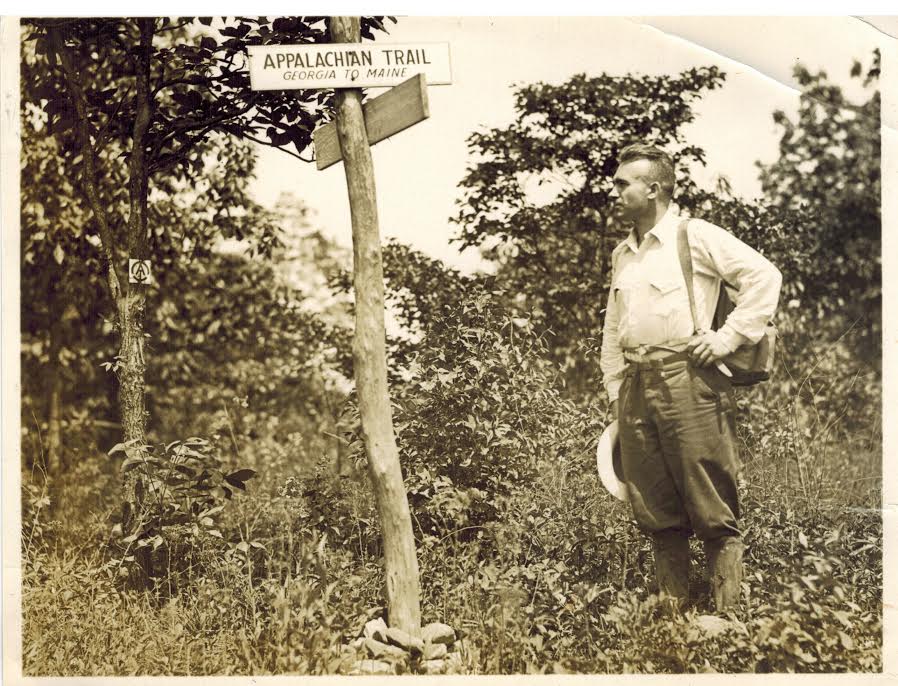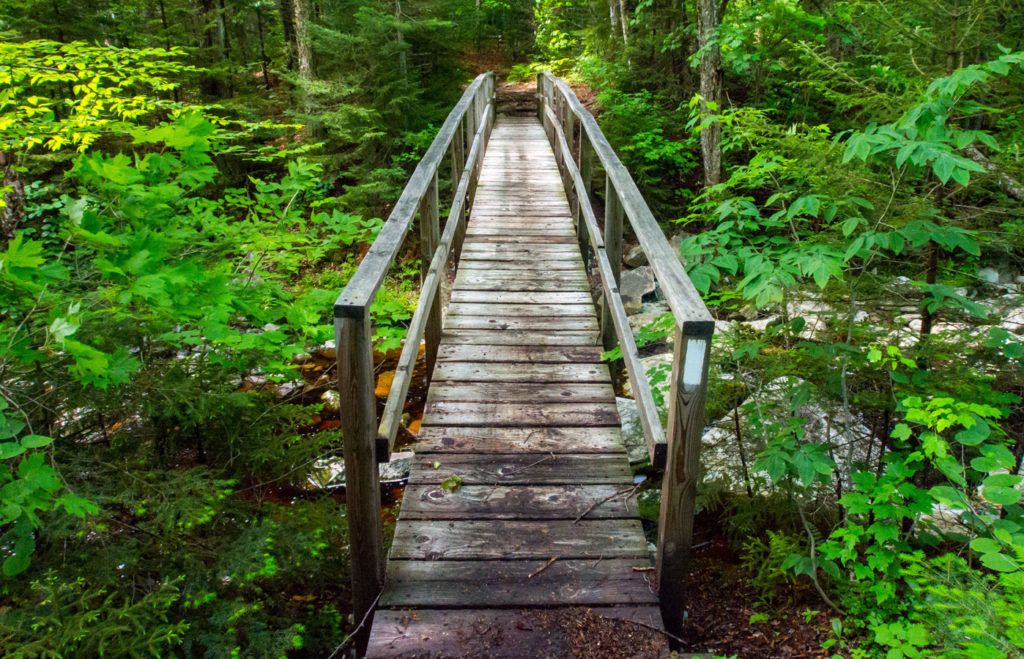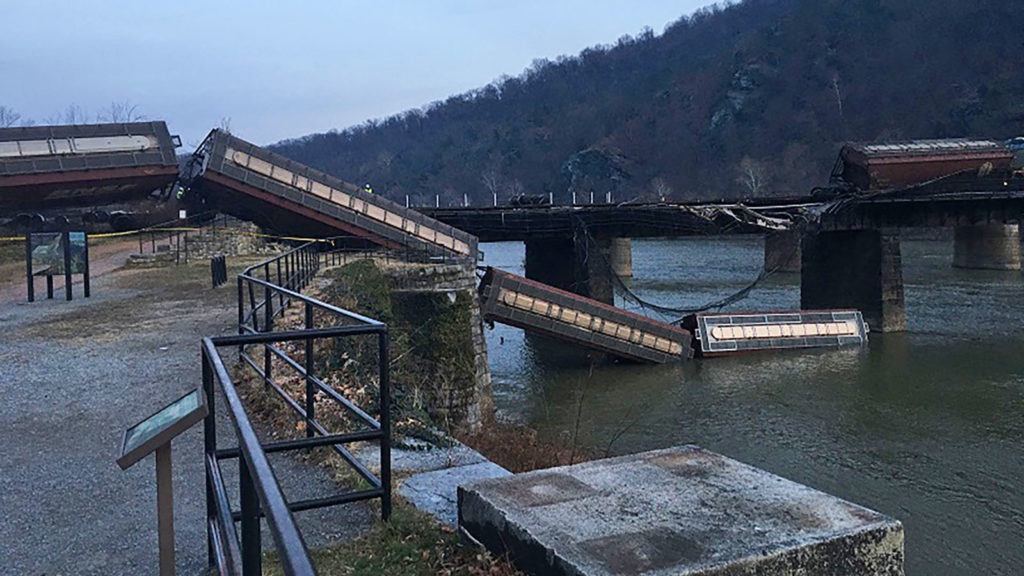By Jordan Bowman, ATC Director of Communications
Protecting the Trail’s Continuous Journey
March 5, 2020
Throughout the Appalachian Trail Conservancy’s century-long history, the Appalachian Trail footpath has always served as the backbone of our conservation efforts. Over the next few months, we will explore the ATC’s past, present, and future work in maintaining and protecting the footpath that brings millions closer to nature each year.
When the Appalachian Trail’s original builders broke ground on the footpath, they sought to create something that, as Myron Avery once said, “beckons not merely north and south but upward to the body, mind and soul of man.” By creating a 2,000-mile footpath extending along the entire East Coast, millions of people were given an opportunity to spend a day (or longer) exploring the Appalachian Mountains and reconnecting with the natural world.
But creating a continuous footpath from Maine to Georgia was not a one-time event. In order to preserve the Trail’s full 2,000-mile journey, continual maintenance and guardianship are essential to ensure the A.T. always remains open.

Trail architect and future ATC chairman Myron Avery stands on the Appalachian Trail near the original southern terminus on Mt. Oglethorpe, Georgia.
This was a point made clear shortly after all sections of the Trail were officially connected in 1937. Just a year later, a hurricane in New England left hundreds of A.T. miles impassable. Before repairs could be completed, much of the Trail’s potential workforce was called into action during World War II. The Trail lay in disrepair and would not be fully connected again until WWII veteran Earl “The Crazy One” Shaffer of Pennsylvania — the first recorded A.T. thru-hiker in 1948 — helped the Trail once again capture the world’s imagination. Thousands rallied to help revive the A.T., and in 1951, all sections of the Trail were officially linked once again.
Since this time, the ATC has amassed a force of over 6,000 annual volunteers to help ensure that the Trail’s continuous journey remains intact. Through the hard work of these volunteers, ATC staff, and the local, state, and federal partners located all along the Trail, we have been able to prevent the long-term effects caused by extreme weather and increased visitation that regularly put the integrity of the footpath at risk.
Every so often, however, an event will take place that requires the ATC to jump into immediate action to help reconnect the Trail itself…
Tropical Storm Irene

The ATC and local Trail Clubs quickly rebuilt or repaired multiple bridges like this one and hundreds of yards of footpath in the wake of Tropical Storm Irene.
On August 28, 2011, Tropical Storm Irene swept across Vermont and New Hampshire, releasing torrents of rain onto an already saturated countryside. Water levels rose from 5 feet to 29 feet in just twelve hours, sweeping away several hundred yards of the A.T. footpath and either completely destroying or severely damaging six Trail bridges. The ATC and its partners at the Green Mountain Club and the Green Mountain National Forest leaped into action, implementing relocations and rebuilding the footpath foot-by-foot to ensure hikers were able to successfully complete their journeys. The bridges were all replaced or repaired over the following field seasons, and we continue to use the knowledge learned during and after this event to harden or reroute sections of the Trail to avoid future extreme “microburst” weather in New England.
2016 North Carolina Wildfires

After wildfires destroyed a six-mile section of the A.T. in North Carolina, ATC’s Konnarock Volunteer Trail Crew and the Nantahala Hiking Club took quick action to repair and reinforce the footpath for incoming hikers.
After an extended drought squeezed most of the moisture out of the Southeast, wildfires engulfed the Nantahala National Forest in the fall of 2016. The fires ultimately scorched over 37,000 acres of forest, closing 68 miles of the A.T. south of the Nantahala Outdoor Center (NOC). One of the hottest fires devastated a six-mile section of the Trail between the NOC and Tellico Gap, including the stunning overlook known as “The Jump Off.” The ATC’s Konnarock Volunteer Trail Crew, with support from the Nantahala Hiking Club volunteers, led the charge to rehabilitate this iconic section of Trail. In just three weeks, Konnarock completely reinforced this stretch of the footpath after the fires had burned away the organic soil, log steps, roots and trees that supported the Trail, ensuring hikers could once again safely traverse this awe-inspiring section.
The Harpers Ferry Footbridge

The ATC continues to work with the National Park Service and CSX to ensure the A.T. is reconnected as soon as possible. Image courtesy of Anthony Troxel.
The ATC and its partners now face a very different challenge in ensuring an interconnected footpath. Just before Christmas last year, a freight train derailed while crossing the Potomac River into Harpers Ferry. There were thankfully no injuries, but the footbridge carrying the A.T. into Maryland was completely destroyed. As National Park Service and CSX officials continue to investigate the full extent of the damage and the best options for footbridge repair, ATC staff continues to advise and offer assistance to ensure all sections of the A.T. are reconnected as soon as possible, and to ensure hikers have a safe way to continue their journeys along the Trail.
The challenges to maintaining a continuous footpath are many, and the ATC and its partners strive daily to ensure that the Trail continues to fulfill its role as a source of inspiration for millions of hikers each year — from Maine to Georgia, and everywhere in between.
Help us protect the A.T. legacy of volunteerism and Trail protection — your donation today helps ensure future generations can experience a closer walk with nature.
Lead image courtesy of Erik Barstow / Barstow Photography
